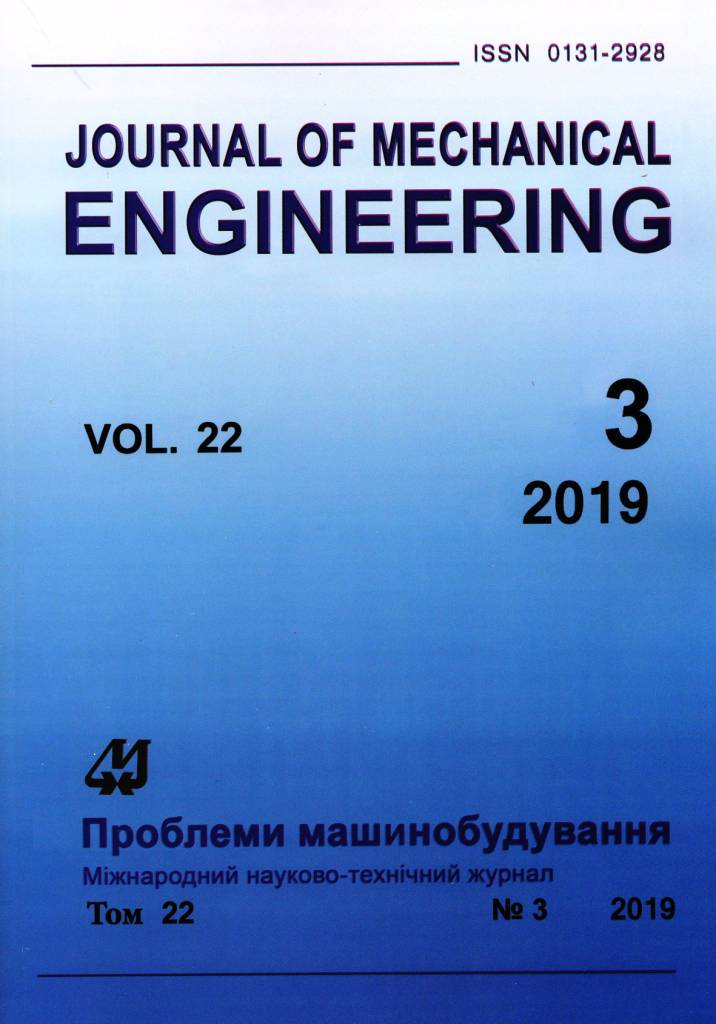An Analysis of Thermodynamic Characteristics of Metal-Hydride Systems for Hydrogen Storage, Using a Modified Scheme of the Perturbation Theory
Keywords:
hydrogen, metal hydrides, intermetallic compounds, phase diagrams, lattice gasAbstract
The use of hydrides of intermetallic compounds (IMC) to implement the working processes of thermo sorption compressors, heat pumps, storage systems, cleaning, and programmable supply of hydrogen is due to a number of unique properties of these hydrogen sorbents. These include, first of all, the fact that the saturation of IMCs with a large sorption capacity occurs under relatively "mild" thermodynamic conditions, as well as the selectivity of sorption processes and the presence of the effect of thermodesorptional activation of atoms and molecules of hydrogen isotopes. The work is devoted to the description of phase equilibria in IMC hydrides. The proposed approach to the problem of calculating phase equilibria in metal hydrides consists in determining the properties of the lattice gas of H atoms and the H2 molecular phase (which is in equilibrium with it) within the framework of a single method, the modified perturbation theory. The thermodynamic description of the hydrogen subsystem in the region of disordered α-, β-phases is carried out on the basis of the model of the non-ideal (interacting) lattice gas of hydrogen atoms. In this case, both the direct interaction between hydrogen atoms and the indirect "deformation" contributions to the potential energy due to the expansion of the lattice during hydrogen dissolution are taken into account. Simulation of phase transitions in IMC-hydrogen systems based on the modified perturbation theory scheme gives a correct description of the main features of phase diagrams in a wide range of hydrogen pressures. From the condition of the equality of the chemical potentials of the H-subsystem of the hydride and H2-phase (calculated on the H atom), equations are obtained, relating the pressure of the gaseous H2 phase to the hydride parameters c and T (phase diagrams). The proposed computational procedure does not use adjustable parameters or empirical correlations. It relies on the atomic characteristics of the hydrogen subsystem and metal matrix, which have an unambiguous physical meaning. The object of this research is the LaNi5 intermetallic hydride. Of particular interest is the position of the critical point of the β→α-transition in the LaNi5-hydrogen system, for which there are no experimentally obtained parameter values. The paper presents the calculated values of the β→α-transition critical parameters Tc=445 K, pc=87 atm. The calculated data on the thermodynamic parameters of the α→β-transition (enthalpy, entropy, and pressure on the isotherm plateau) make it possible to describe the solubility of hydrogen in LaNi5 at pressures up to 500 atm and are in good agreement with the available experimental data in the literature.References
Marinin, V. S., Umerenkova, K. R., Shmalko, Yu. F., Lobko, M. P. & Lototsky, M. V. (2002). Interacting lattice gas model for hydrogen subsystem of metal hydrides. Functional materials, vol. 9, no. 3, pp. 395–401.
Marinin, V. S., Shmalko, Yu. F., & Umerenkova, K. R. (2006). Description of phase equilibriums in intermetallic compounds within the perturbation theory. Hydrogen Materials Science and Chemistry of Carbon Nanomaterials, pp. 187–192. https://doi.org/10.1007/978-1-4020-5514-0_23
Marinin, V. S. (1999). Teplofizika alternativnykh energonositeley [Thermophysics of alternative energy carriers].Kharkov: Fort, 212 p. (in Russian).
Yartys, V. A., Burnasheva, V. V., & Semenenko, K. N. (1983). Structural Chemistry of Hydrides of Intermetallic Compounds. Russian Chemical Reviews, vol. 52, no. 4, pp. 299–317. https://doi.org/10.1070/RC1983v052n04ABEH002818
Alefeld, G. & Folkl, I.(Eds.) (1981). Vodorod v metallakh v 2-kh t. [Hydrogen in metals in 2 vols.].Moscow: Mir (in Russian).
Shmalko, Yu .F., Marinin, V. S., & Umerenkova, K. R. (2007). Phase equilibriums in "hydrogen – metallic hydride" systems.Kharkov: KNU–IMBP.
Van Mal, H. H. (1976). Stability of ternary hydrides and some applications. Philips Research Reports Suppl., no. 1, pp. 1–88.
Biris, A., Bucur, R. V., Ghete, P., Indrea, E., & Lupu, D. (1976). The solubility of deuterium in LaNi5. Journal of the Less Common Metals, vol. 49, pp. 477–482. https://doi.org/10.1016/0022-5088(76)90059-X
Downloads
Published
Issue
Section
License
Copyright (c) 2019 Viktor V. Solovei, Andrii M. Avramenko, Kseniia R. Umerenkova

This work is licensed under a Creative Commons Attribution-NoDerivatives 4.0 International License.
All authors agree with the following conditions:
- The authors reserve the right to claim authorship of their work and transfer to the journal the right of first publication of the work under the license agreement (the agreement).
- Authors have a right to conclude independently additional agreement on non-exclusive spreading the work in the form in which it was published by the jpurnal (for example, to place the work in institution repository or to publish as a part of a monograph), providing a link to the first publication of the work in this journal.
- Journal policy allows authors to place the manuscript in the Internet (for example, in the institution repository or on a personal web sites) both before its submission to the editorial board and during its editorial processing, as this ensures the productive scientific discussion and impact positively on the efficiency and dynamics of citation of published work (see The Effect of Open Access).

